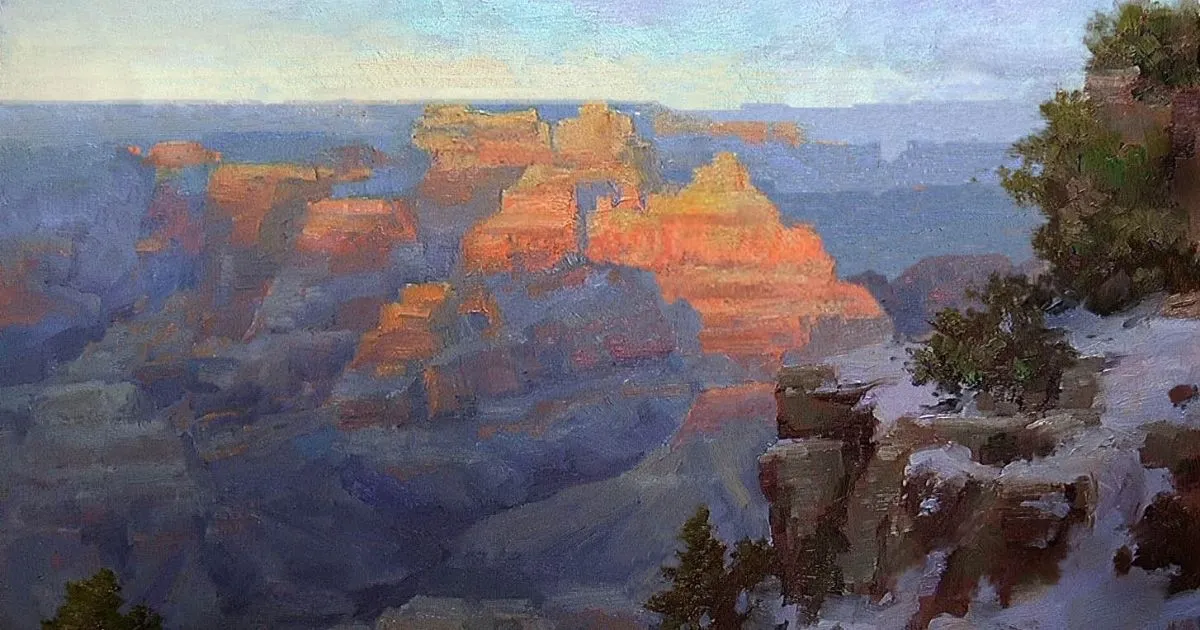3 Secrets to Improve Your Landscape Paintings

Capturing the beauty of a panoramic landscape in a painting can be a challenge. Level up your work with these little-known tips from one of our most popular instructors.

1: Attractive landscape shapes are asymmetrical.
You have probably heard the term “asymmetrical or abstract shape” which is rarely defined. Most of nature’s shapes are symmetrical. Trees tend to be too round. Many rocks are geometrical shapes. We artists are to improve over nature.
Here is an easy way to determine what an attractive landscape shape is. Visualize the shape as a silhouette. In your imagination, split it into two halves. If both halves are obviously different, you have a well-designed shape.
Related: Paint with Intuitive Shapes in Landscapes
2: Oils and acrylics are compatible.
Who says oils and acrylics are not compatible? Oil painting is a popular medium but it has two drawbacks: the challenge of adding layers like highlights on top of wet paint, and the inability to produce thin lines. These issues can be solved by using acrylics. Yes, you can paint with oils over a thin application of dry acrylics! To blend, add a medium to allow it to slide more easily. To create thin lines such as twigs, apply acrylics over a dry oil painting.
3: You can use PanPastels to correct watercolor mishaps.
Finally, a headache for watercolorists is solved! To correct mishaps in watercolor paintings, use PanPastels. The two media are identical once the watercolor has dried. You can add highlights to foliage or rocks, even white water right on top without viewers noticing the patch-up job.

Ready to put these landcape painting secrets to use?
Join us for “Sculpt Your Way to Better Landscape Paintings” — a brand new Paint Along series with Johannes Vloothuis!
About Johannes Vloothuis
Johannes Vloothuis is considered a master of all media, offering instruction in oil, watercolor, pastel, and other art media. A leading art teacher, Johannes has shared his techniques and insights with more than 20,000 online students. He applies his ample teaching and painting experience to help developing artists overcome the common traps that prevent them from advancing to the next level.
















Join the Conversation!